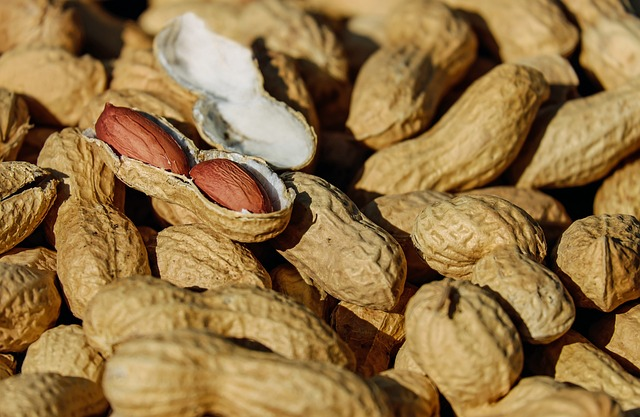Unlocking Your Gut Health: The 5-Step Gut Healing Protocol
Did you know that the state of your gut has a powerful impact on your overall well-being? From digestion to mood, a healthy gut plays a crucial role in maintaining optimal health. In this blog post, we will explore the 5-Step Gut Healing Protocol, a comprehensive approach to improving gut health that addresses the root causes of common gut issues and promotes long-term healing. Let’s dive in!
Key Takeaways
-
Understanding gut health is essential for addressing issues that can cause a range of symptoms.
-
The 5-Step Healing Gut Protocol focuses on elimination, restoration, replenishment, repair and maintenance to improve gut health.
-
A balanced diet and targeted supplements can help promote gut healing when combined with lifestyle modifications & functional medicine approaches.
Understanding Gut Health and Its Importance
Gut health plays a vital role in our overall well-being, influencing nutrient absorption, hormone formation, and bacterial balance in the gut. Furthermore, a well-functioning gut contributes significantly to mental health due to its connection with the gut-brain axis – a bidirectional communication network connecting the central nervous system and the enteric nervous system.
But what happens when our gut health is compromised? Common gut issues such as irritable bowel syndrome (IBS), inflammatory bowel disease (IBD), food sensitivities, and dysbiosis can cause a range of unpleasant symptoms, including abdominal pain, bloating, gas, diarrhea, constipation, and fatigue.
Addressing these issues and promoting gut healing requires comprehension of the underlying causes and adherence to a comprehensive approach such as the 5-Step Gut Healing Protocol.
The Gut-Brain Axis
The gut-brain axis is a complex system that links the central nervous system with the enteric nervous system in the gastrointestinal tract. This connection influences both emotional and cognitive functions, making it crucial for mental and emotional well-being.
Sustaining a healthy gut is, therefore, of great importance for overall health and can even help prevent conditions like celiac disease and other autoimmune diseases. Adhering to the 5-Step Gut Healing Protocol can bolster gut healing, enhance gut health, and subsequently benefit the gut-brain axis and overall well-being.
Common Gut Issues
Common gut issues include leaky gut syndrome, irritable bowel syndrome, and intestinal permeability, which can lead to various symptoms and health conditions. Leaky gut, for instance, is characterized by disturbed tight junctions between the epithelial cells in the intestinal barrier, resulting in larger molecules entering the bloodstream, triggering immune responses, and inflammation, which can affect the immune system.
Environmental toxins like bisphenols, phthalates, heavy metals, and pesticides, as well as medications like non-steroidal anti-inflammatory drugs (NSAIDs) and antibiotics, can contribute to leaky gut. Adopting the 5-Step Gut Healing Protocol allows you to tackle these issues and foster the healing of your digestive system.
The 5-Step Gut Healing Protocol
The 5-Step Gut Healing Protocol is a comprehensive approach to improving gut health. You can learn in few steps how to heal your gut. It consists of the following steps:
-
Elimination
-
Restoration
-
Replenishment
-
Repair
-
Maintenance
Adherence to this protocol enables you to tackle the root causes of prevalent gut issues and promote long-term healing.
Each step of the 5-Step Gut Healing Protocol plays a vital role in the healing process, focusing on different aspects of gut health, from removing irritants and triggers to restoring essential nutrients and digestive elements. Let’s explore each step in more detail.
Step 1: Eliminate
The first step of the 5-Step Gut Healing Protocol is elimination, which involves removing potential irritants and triggers from your diet and environment to reduce inflammation and support gut healing. This may include following an elimination diet, which temporarily removes a range of nutritious foods to identify any potential food-related issues.
A healthcare professional, such as a nutritional therapy practitioner or dietician, can assist you in ensuring appropriate nutrient density and monitoring your diet and its effects on your health during an elimination diet. Identifying and eliminating irritants aids in reducing inflammation and creating a conducive environment for gut healing.
Step 2: Restore
The second step of the 5-Step Gut Healing Protocol is restoration, which involves replenishing essential nutrients and digestive components to bolster optimal gut function and well-being. These nutrients and elements assist in preserving a balanced amount of bacteria in the gut, which is essential for effective digestion and absorption of nutrients.
Replenishing essential nutrients and digestive elements can be achieved through:
-
A balanced diet
-
Incorporating probiotics
-
Supplementing with vitamins and minerals
-
Including fiber, prebiotics, and fermented foods in your diet
These practices can help to restore essential nutrients and elements in the digestive tract.
Step 3: Replenish
The third step of the 5-Step Gut Healing Protocol is replenishment, which involves introducing beneficial bacteria to the gut via:
-
Probiotics: live microorganisms that have a beneficial effect on the gut microbiome
-
Prebiotics: non-digestible fibers that act as a food source for beneficial bacteria in the gut
-
Fermented foods: foods that have undergone a fermentation process, such as sauerkraut, kimchi, and yogurt, which contain beneficial bacteria
These methods help foster a healthy gut microbiota and overall microbiome.
Fermented foods, such as:
-
yogurt
-
fermented vegetables
-
fermented soy products
-
kombucha
Have gone through a fermentation process that helps preserve them and introduces beneficial bacteria to the gut. Incorporating these foods into your diet can help replenish the gut with beneficial bacteria and support overall gut health.
Step 4: Repair
The fourth step of the 5-Step Gut Healing Protocol involves repairing the gut lining with targeted nutrients and supplements to reduce inflammation and support healing. Some necessary nutrients for repairing the gut lining include:
-
Vitamins A, C, and E
-
Zinc
-
Omega-3 fatty acids
-
Glutamine
Probiotics, prebiotics, and digestive enzymes can also be used as targeted supplements to reduce inflammation and support healing. Supplying your body with the necessary nutrients and supplements assists in addressing nutrient deficiencies caused by digestive conditions and bolsters the repair of the gut lining.
Step 5: Maintain
The final step of the 5-Step Gut Healing Protocol is maintenance, which involves implementing healthy lifestyle modifications, managing stress levels, and conducting regular check-ups with a healthcare practitioner to maintain gut health. A balanced diet, regular exercise, and adequate sleep are all essential components of maintaining gut health.
Stress management is also crucial for preserving gut health, as it can help decrease inflammation and enhance digestion. Regular visits to a healthcare professional can assist in detecting any potential problems with gut health and offering advice on how to sustain gut health.
Supporting Your Gut Health with Diet and Supplements
A well-rounded diet and specific supplements can assist in facilitating recovery and sustaining ideal gut performance. By incorporating a range of:
-
fruits
-
vegetables
-
whole grains
-
lean proteins
-
healthy fats
In your diet, you can support gut healing and maintain optimal gut function.
In addition to a balanced diet, targeted supplements like:
-
Probiotics
-
Prebiotics
-
Digestive enzymes
-
Omega-3 fatty acids
Embracing a balanced diet and including suitable supplements can bolster your gut health and overall well-being, providing benefits for digestive health as well.
Food Choices for Gut Health
When it comes to food choices for gut health, anti-inflammatory foods, fiber-rich options, and fermented foods are essential. Diets known for their anti-inflammatory properties, such as the Mediterranean, DASH, and Paleo diets, can help promote gut healing.
Whole grains, legumes, fruits, and vegetables are excellent sources of fiber, which can support a healthy gut microbiome. Some examples include:
-
Whole wheat bread
-
Lentils
-
Apples
-
Broccoli
Fermented foods, like yogurt, fermented vegetables, and fermented soy products, contain probiotics that can help maintain a healthy balance of gut bacteria.
Inclusion of these food choices in your daily meals can foster gut health and enhance overall well-being.
Supplements for Gut Healing
In addition to a balanced diet, certain supplements can be beneficial for gut healing. These include:
-
Collagen powder: may aid in the repair of the gut lining, enhance digestion, and reduce inflammation
-
Enzymes: can help in the breakdown of food, enhance nutrient absorption, and alleviate digestive distress
-
Fiber: promotes healthy bowel movements and supports gut health
-
Probiotics: introduce beneficial bacteria to the gut, improving digestion and immune function
-
L-glutamine: supports gut lining integrity and helps with tissue repair
Fiber supplements, like psyllium husk, chia seeds, and flaxseeds, can assist in maintaining regular bowel movements, decreasing bloating, and fostering the growth of beneficial bacteria in the gut. Probiotics can help reestablish the balance of beneficial bacteria in the gut, lessen inflammation, and enhance digestion.
Inclusion of these supplements in your daily regimen can bolster gut healing and enhance overall gut health.
Identifying and Addressing Food Sensitivities and Allergies

Identifying and addressing food sensitivities and allergies is crucial for gut healing, as they can contribute to inflammation and exacerbate gut issues. Following an elimination diet can help determine potential food-related issues and prevent further inflammation.
Working with a healthcare professional, such as a nutritional therapy practitioner or dietician, can help ensure appropriate nutrient density and monitor the effects of your diet on your health during the elimination process. Identifying and addressing food sensitivities and allergies enable the creation of a supportive environment for gut healing and overall health.
The Role of Functional Medicine in Gut Health
Functional medicine plays a vital role in gut health by focusing on identifying and addressing the root causes of gut issues, using personalized treatment plans and a holistic approach to healing. This comprehensive approach to healthcare considers the entire person, rather than just the symptoms, by evaluating the individual’s:
-
lifestyle
-
diet
-
environment
-
genetics
This evaluation helps determine the underlying cause of the gut issue.
Collaborating with a functional medicine practitioner offers the following benefits:
-
Development of a personalized treatment plan that tackles the root causes of your gut issues
-
Fosters long-term healing
-
Leads to improved gut health and general well-being.
Summary
In conclusion, the 5-Step Gut Healing Protocol offers a comprehensive approach to improving gut health by addressing the root causes of common gut issues and promoting long-term healing. By following this protocol and incorporating a balanced diet, targeted supplements, and lifestyle modifications, you can support gut healing and maintain optimal gut function.
Check our our 30 day gut healing diet plan guide for additional tips.
Remember, a healthy gut is essential for overall well-being, and by taking the necessary steps to improve your gut health, you can positively impact your mental, emotional, and physical health. Start your journey towards better gut health today, and experience the benefits of a healthier, happier life.
Frequently Asked Questions
What is the quickest way to heal your gut?
For quickest results, incorporate probiotics into your diet, increase your fiber intake with a diverse range of plant-based foods and remove inflammatory foods.
Also make sure to drink water, consume fermented foods, exercise daily and get adequate sleep.
What are the 5 R's for gut healing?
The 5Rs for gut healing are Remove, Replace, Reinoculate, Repair and Rebalance.
This process of functional medicine involves restoring optimal digestion by removing potential irritants, replacing missing enzymes, reinoculating with probiotics, repairing the gut lining, and rebalancing the microbiome.
What are the 4 stages of gut healing?
The four stages of gut healing involve removing irritants, replacing digestive agents, reinoculating with friendly bacteria and foods to promote growth, and repairing the mucosal lining.
What is the best gut healing protocol?
Removing the problematic foods, replacing with nourishing options, reinoculating beneficial bacteria, repairing the gut lining, and rebalancing the microbiome are the best gut healing protocol recommended by Functional Medicine.
What is the gut-brain axis?
The gut-brain axis is a two-way communication network connecting the brain and the gastrointestinal tract, influencing both emotional and cognitive functions.
